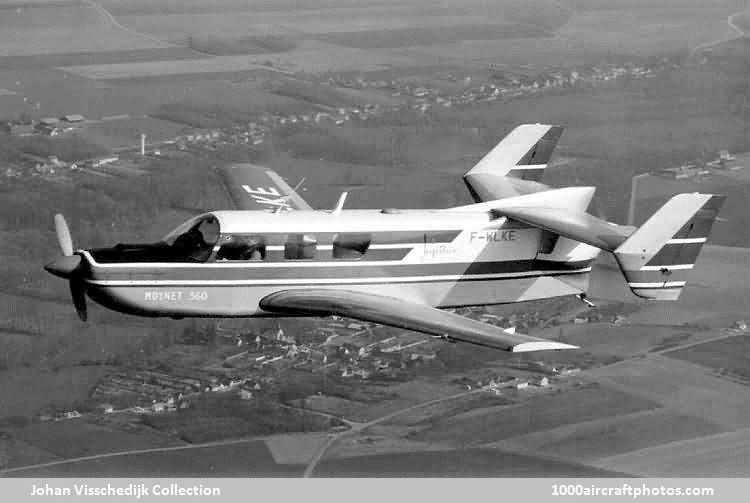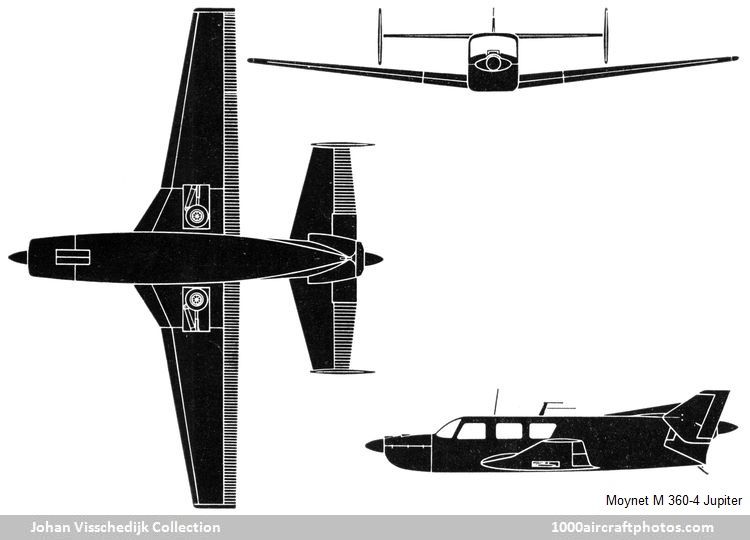The Jupiter was, after the Cessna 336 Skymaster, the second light business aircraft to be fitted with two centrally placed engines, the center line thrust (CLT) concept. CLT gives the advantages of higher safety, better performance on one engine compared to twin-engined models with conventional engine-positions, simpler construction and thus less costly to produce.
The second prototype, designed under the designation Moynet 700, was also built by Matra as the six/seven-seat Moynet M 360-6 Jupiter. Registered as F-WLKY it flew for the first time on May 23, 1963 and had: a slightly wider and 2 ft 11 in (0.89 m) longer fuselage; two 290 hp Lycoming IO-540 engines; 705 lb (320 kg) higher max. t/o weight; and a 230 mls (370 km) longer range.
A proposed model was the M 360-P, a pressurized version with two 340 hp Lycoming engines. Also projected was the eight-seat Moynet 2000 with a 725 hp Turboméca Aztazou turbo-prop in the nose and a 3,000 lb (1,360 kg) Pratt & Whitney JT12A-6 turbojet in the rear of the much longer fuselage fitted with a single vertical tail.
At the first flight of the M 360-6 it was announced that the series production would be undertaken by Sud-Aviation. This company also projected a pressurized but even larger model known as the Présidence with 400 hp TIGO-541 engines and max. T/O weight of 6,173 lb (2,800 kg).
Although the M 360-4 and M 360-6 were shown on a large scale and with success in the USA as well in Europe, these, and all projected versions were abandoned.
Note the front engine being switched off."
Span: 36 ft 1 in (11.00 m)
Length: 25 ft 10 in (7.88 m)
Height: 7 ft 7 in (2.31 m)
Wing area: 173.3 sq.ft (16.1 sq.m)
Empty weight: 2,216 lb (1,005 kg)
Max T/O weight: 3,814 lb (1,730 kg)
Max speed: 211 mph (340 km/h)
Max climb: 1,457 ft (444 m)/min
Service ceiling: 22,474 ft (6,850 m)
Range: 1,013 mls (1,630 km)

